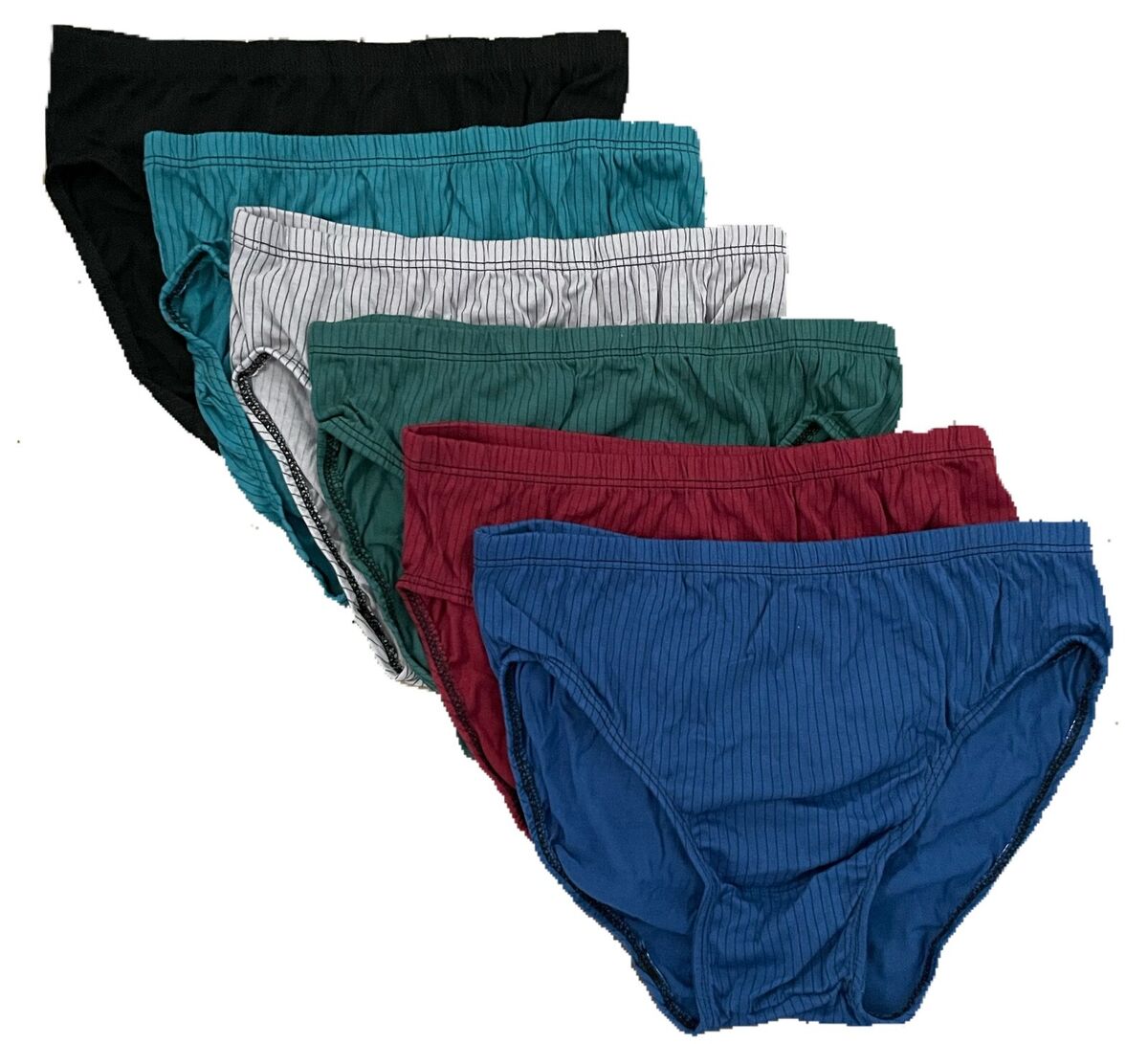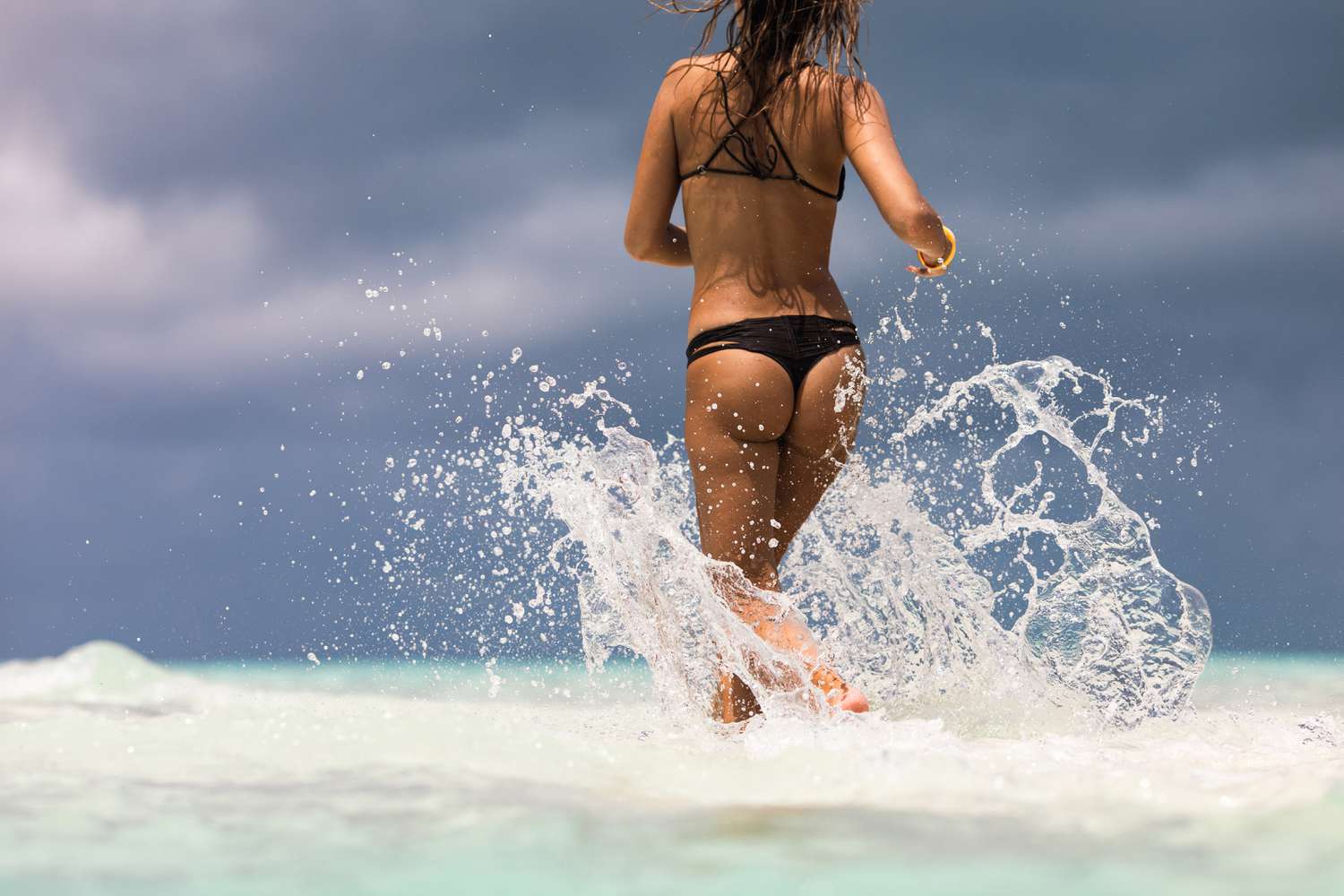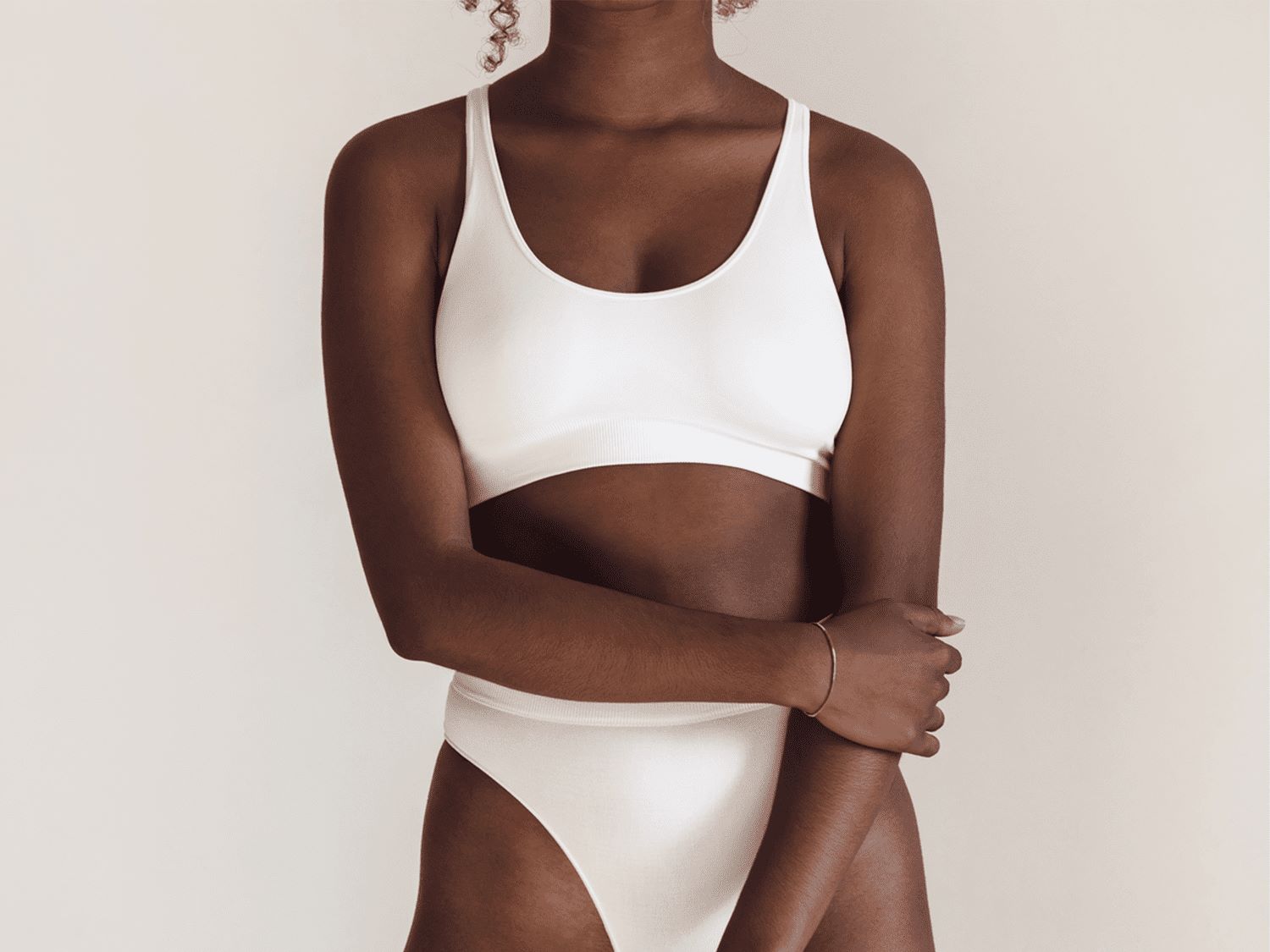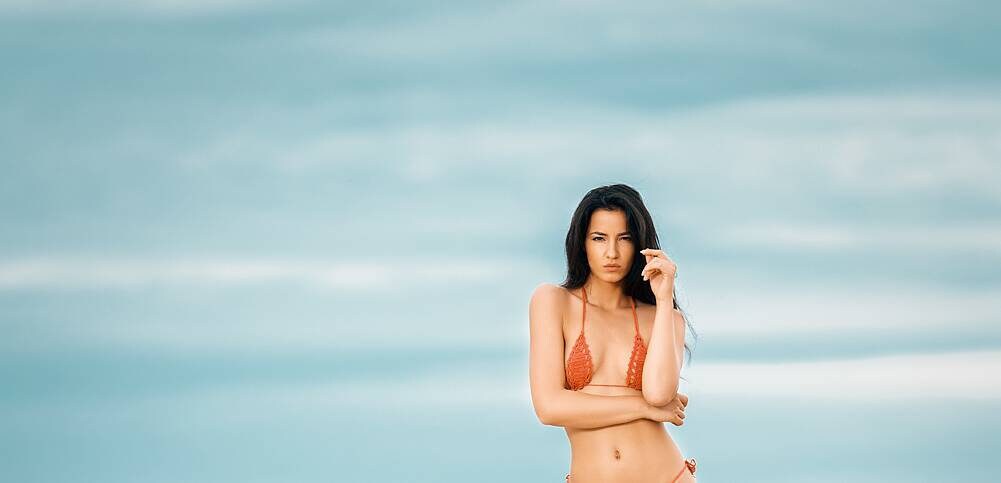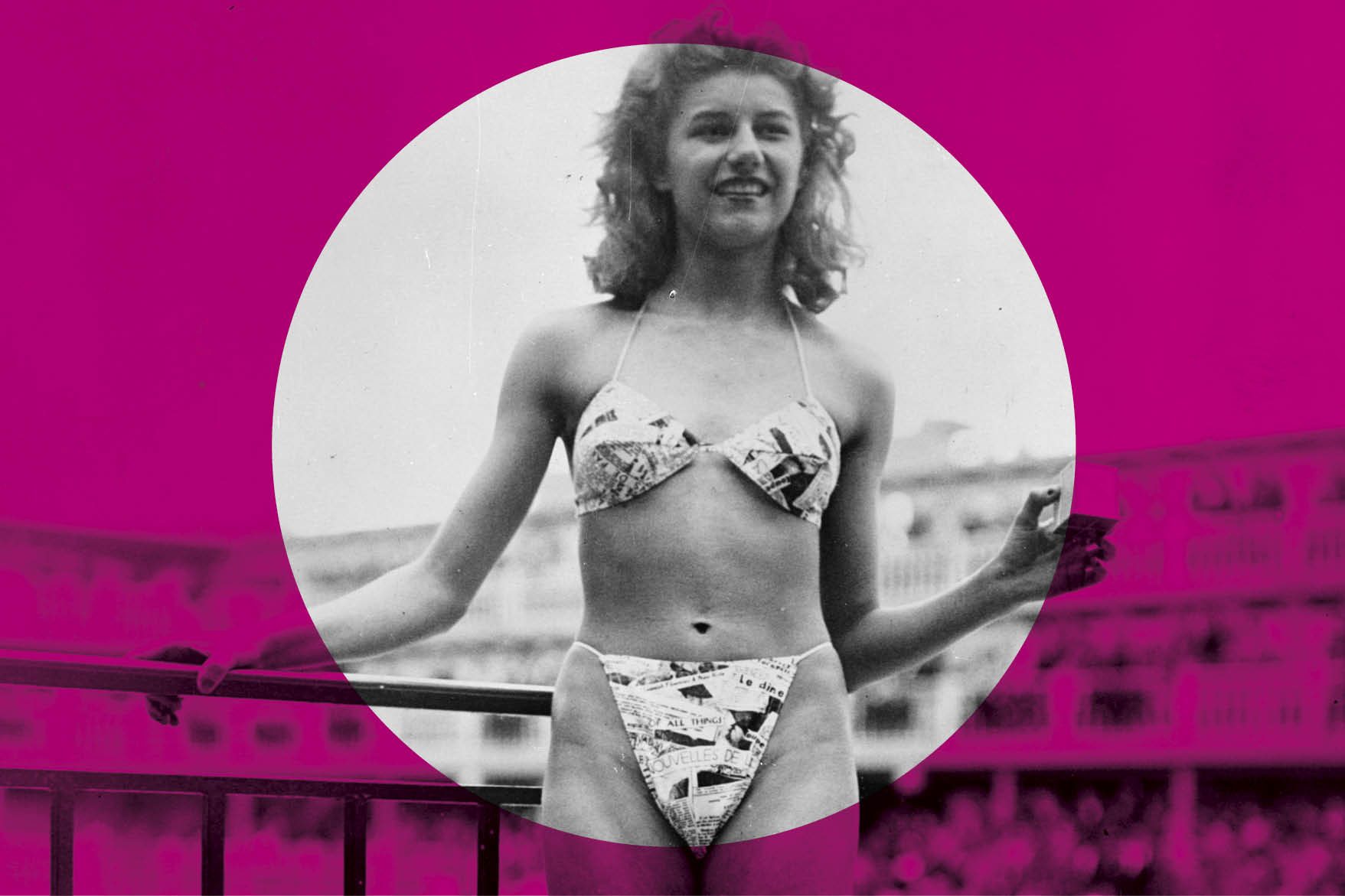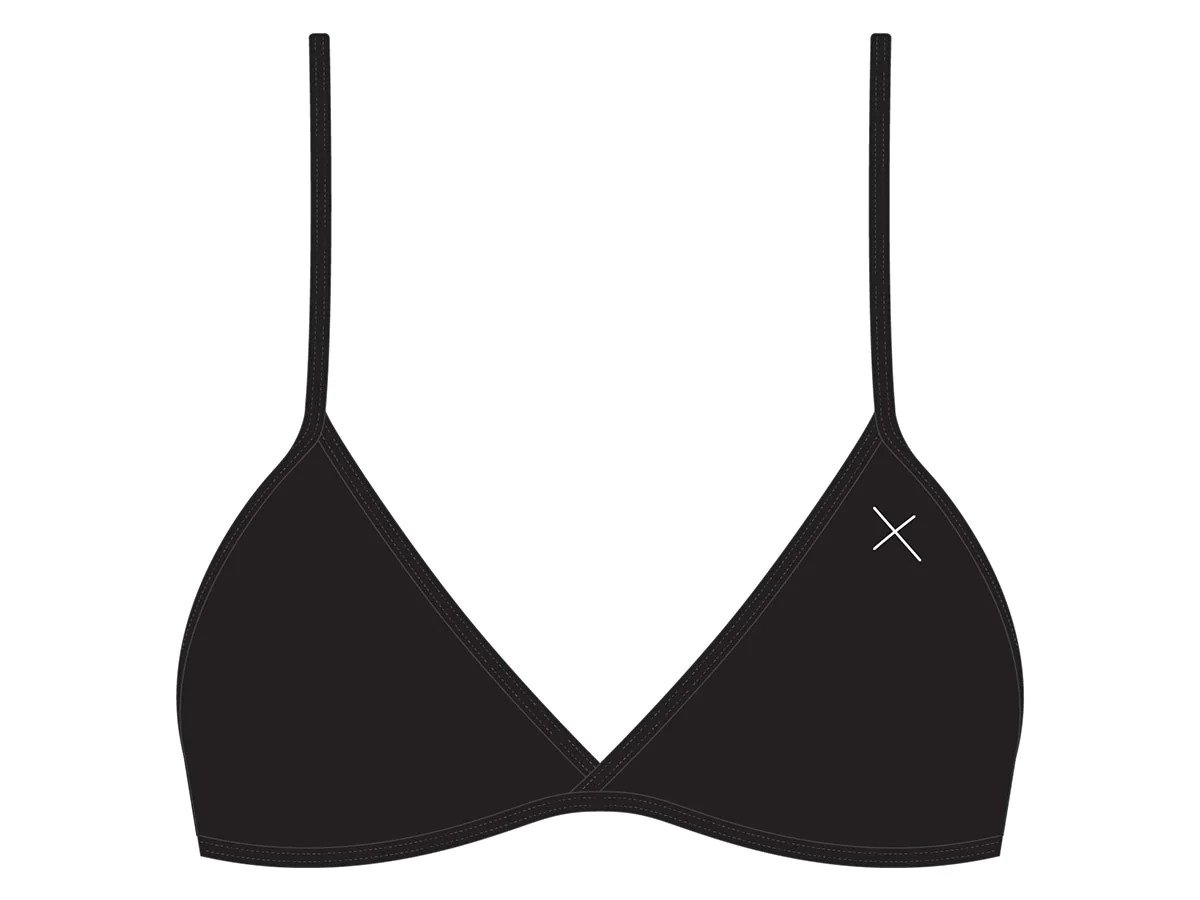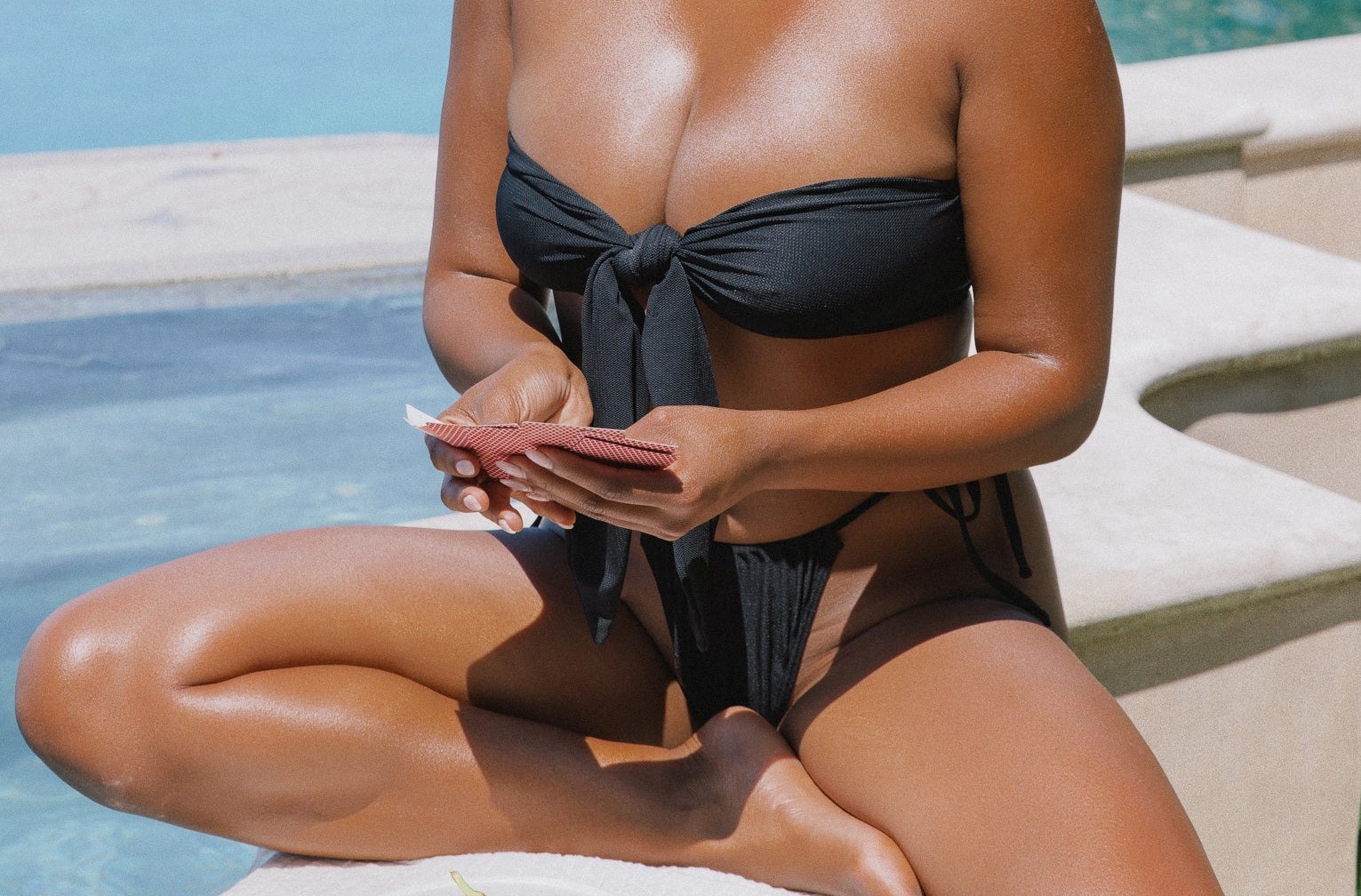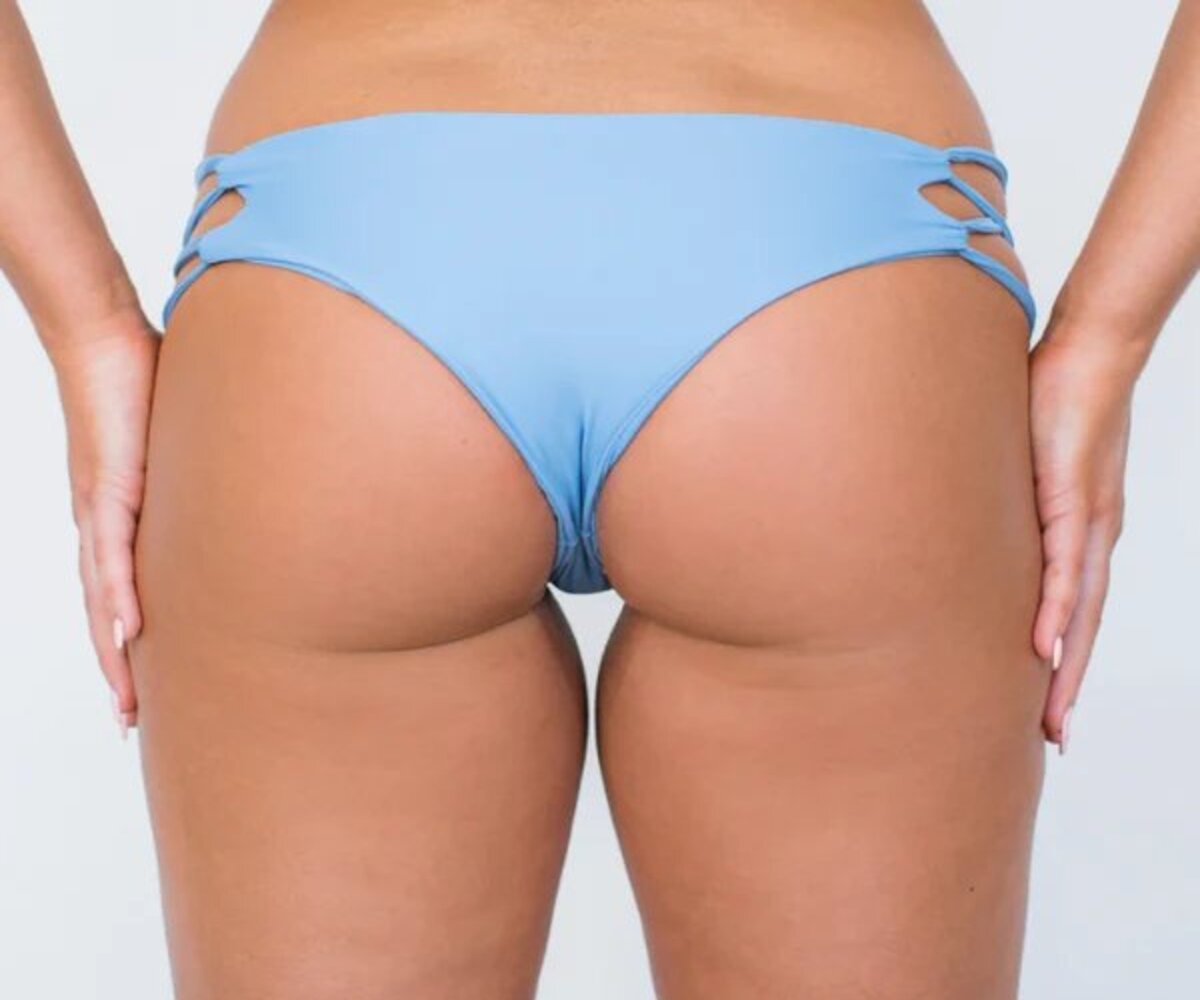Home>Women's Underwear>Bikinis>What Is A Bikini?
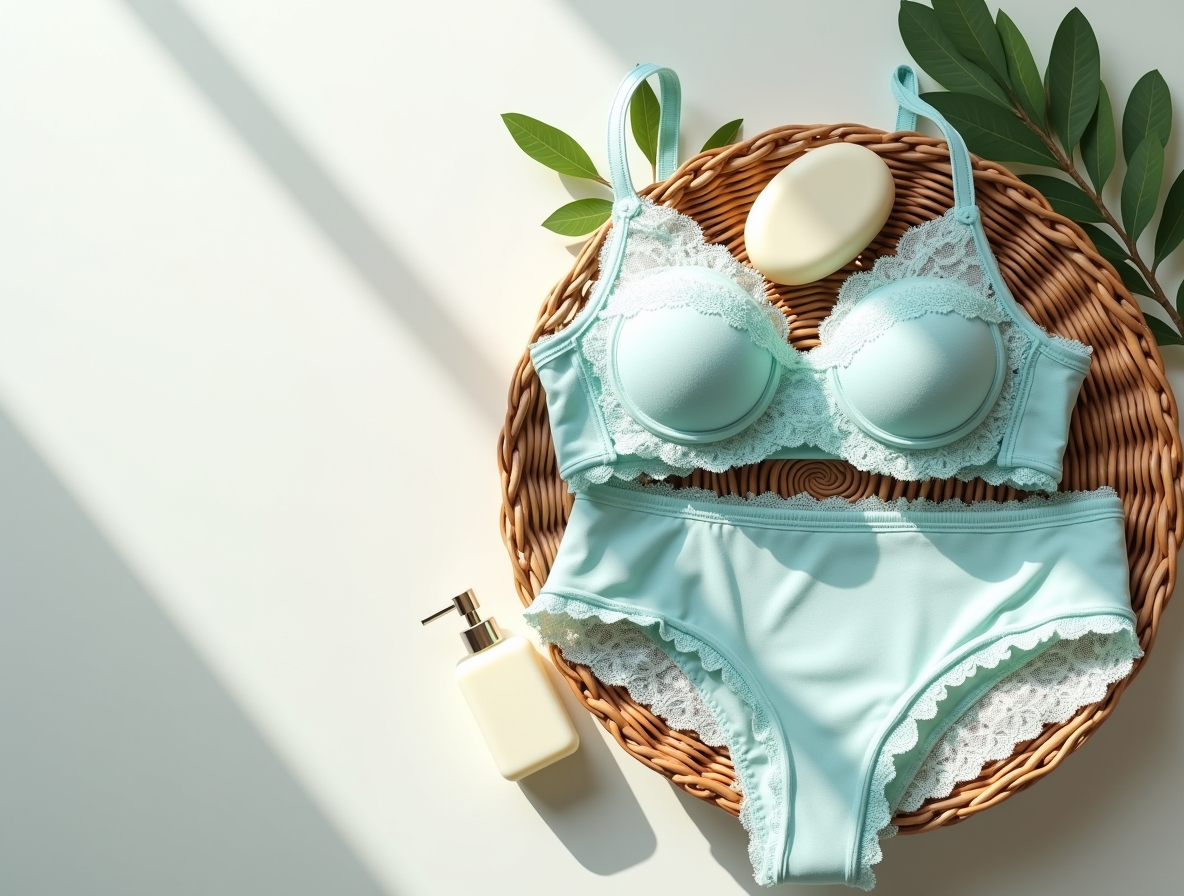

Bikinis
What Is A Bikini?
Modified: August 3, 2023
Discover the definition and styles of bikinis, including its brief history and how it has become a popular swimwear choice for women. Explore the latest trends and find the perfect bikinis for your next beach getaway.
(Many of the links in this article redirect to a specific reviewed product. Your purchase of these products through affiliate links helps to generate commission for Under-tec.com, at no extra cost. Learn more)
Table of Contents
Introduction
A bikini is a two-piece swimsuit that has become a popular choice for women globally. It is designed to showcase the beauty of the female body while providing the freedom and comfort to enjoy water activities. With its revealing design, the bikini has come to symbolize confidence, femininity, and empowerment.
The bikini has a rich history dating back to ancient civilizations, but in modern times, it has evolved into a fashion staple. From its humble beginnings to its influence on the fashion industry, the bikini has become more than just a piece of swimwear. It represents a cultural shift and the changing perceptions of beauty and body image.
In this article, we will delve into the fascinating world of bikinis, exploring their history, design and features, popularity, cultural impact, different styles, controversies, and tips for choosing the right bikini for your body type. So, whether you are a bikini enthusiast or simply interested in learning more about this iconic swimsuit, let’s dive in and explore the wonderful world of bikinis.
History of the Bikini
The history of the bikini can be traced back thousands of years. In ancient Rome, women wore garments similar to bikinis for athletic activities and to cool off in hot weather. However, it wasn’t until the mid-20th century that the modern bikini as we know it today was introduced.
In 1946, French engineer Louis Réard and fashion designer Jacques Heim independently unveiled their versions of the bikini. Réard’s creation, named after the Bikini Atoll in the Pacific Ocean where nuclear testing was taking place, was a two-piece swimsuit with a daring design that revealed the navel and displayed more of the wearer’s body than traditional swimwear. Heim’s swimsuit, called the Atome, was also a two-piece but offered slightly more coverage.
Initially, the bikini faced significant backlash and was considered scandalous and inappropriate. However, as society became more accepting of women’s liberation and body positivity, the bikini gained popularity. In the 1960s, iconic figures like Brigitte Bardot and Ursula Andress showcased the bikini in films, fueling its appeal and cementing its status as a symbol of freedom and sexiness.
Throughout the years, the bikini’s design has continued to evolve. From the high-waisted styles of the 1950s to the string bikinis of the 1970s and the trendy cut-out designs of today, the bikini has adapted to reflect changing fashion trends and the diverse preferences of women.
Today, the bikini is not only a popular choice for beach vacations and poolside lounging but also a statement piece in the fashion industry. Designers constantly experiment with innovative cuts, prints, and materials to cater to different body types and fashion-forward individuals.
The bikini’s journey from a controversial swimwear style to a widely accepted fashion staple is a testament to its impact on cultural norms and women’s liberation. It has empowered women to embrace their bodies and enjoy the freedom of self-expression in swimwear.
Design and Features of a Bikini
The bikini is designed to accentuate the beauty of the female form while providing comfort and freedom of movement. Its two-piece structure typically consists of a top and bottom that can vary in style and coverage.
The bikini top is designed to provide support and enhance the bust. It comes in various styles such as triangle, bandeau, halter, and underwire. The triangle top is a classic choice that offers minimal coverage and adjustable straps. The bandeau top is strapless and provides a more minimalistic look. The halter top features straps that tie behind the neck, offering additional support. The underwire top includes structured cups for added lift and shaping.
The bikini bottom comes in different cuts, ranging from full coverage to minimal coverage. Common styles include the classic brief, high-waisted, Brazilian, thong, and string. The classic brief provides moderate coverage and is a timeless option. The high-waisted bottom features a higher rise that emphasizes the waist and offers tummy coverage. The Brazilian bottom has a narrower cut and cheeky coverage, while the thong offers minimal coverage at the back. The string bottom features adjustable ties on the sides for a customizable fit.
In addition to the various styles, bikinis also come in a wide range of colors, patterns, and prints. From solid colors to vibrant tropical prints, there is a bikini for every personal style and preference.
When it comes to materials, bikinis are often made from quick-drying and stretchy fabrics like nylon, spandex, and polyester blends. These materials provide comfort and durability, allowing the bikini to withstand the rigors of water activities and exposure to sun and chlorine.
Another important feature of a bikini is the presence of adjustable straps, ties, and closures. These allow the wearer to customize the fit and provide flexibility in terms of tightness and support. Adjustable features also come in handy when transitioning from sunbathing to swimming or engaging in more active water sports.
The design and features of the bikini are crucial in ensuring a comfortable and flattering fit for various body types and preferences. With its versatility and endless design options, the bikini continues to be a beloved choice for women seeking both fashion and functionality in their swimwear.
Popularity and Cultural Impact
The bikini has had a profound impact on popular culture and has become an iconic symbol of beauty, freedom, and confidence. It has transcended its status as mere swimwear and has embedded itself in various aspects of society, such as media, entertainment, and fashion.
One of the main reasons for the bikini’s popularity is its ability to showcase the beauty and curves of the female body. With its revealing design, it celebrates body positivity and encourages women to embrace their natural shape. The bikini empowers women to feel confident and comfortable in their own skin, redefining societal standards of beauty and challenging the notion that only certain body types are attractive.
In the world of media and entertainment, the bikini has become synonymous with beach culture and vacation getaways. It is often featured in films, music videos, and magazines, where it represents relaxation, fun, and allure. Iconic images of celebrities like Marilyn Monroe, Farrah Fawcett, and Pamela Anderson in bikinis have helped solidify its place in popular culture.
The bikini has also played a significant role in the fashion industry. Swimwear fashion shows and campaigns celebrate the latest bikini trends and provide inspiration for women who want to express their personal style at the beach or pool. Designers continually innovate and experiment with unique cuts, patterns, and materials to offer a wide variety of options that cater to diverse tastes.
Additionally, the bikini has sparked conversations and debates about body image, modesty, and femininity. Its revealing nature has led to discussions surrounding societal expectations of women’s bodies and the objectification of female sexuality. Critics argue that the bikini perpetuates unrealistic beauty standards, while supporters view it as a symbol of equality and self-expression.
Despite the controversies, the bikini remains a popular choice for women of all ages and backgrounds. Its enduring appeal can be attributed to its ability to make women feel confident, sexy, and empowered. With its cultural impact and visibility in various forms of media, the bikini continues to shape perceptions of beauty and inspire self-assurance.
Different Styles of Bikinis
When it comes to bikinis, there is a wide array of styles to suit every body type and personal preference. Each style offers a unique look and provides varying levels of coverage and support. Understanding the different styles of bikinis can help you find the perfect fit that flatters your figure and boosts your confidence.
1. Triangle Bikini: A classic and timeless style, the triangle bikini features simple triangular cups that provide minimal coverage. It typically has adjustable straps and ties, allowing for a customizable fit. This style is perfect for those who want a minimalist and effortlessly chic look.
2. Bandeau Bikini: The bandeau bikini features a strapless top that wraps around the chest. It offers a sleek and sexy look while providing moderate coverage. Bandeau tops can have built-in support or come with detachable straps for added versatility.
3. Halter Bikini: The halter bikini has a top that ties around the neck, offering more support and lift. It is a flattering option for those who want ample coverage for the bust area while still maintaining a stylish and feminine look.
4. Underwire Bikini: Similar to a bra, the underwire bikini has structured cups with underwire support. This style provides enhanced lift, shaping, and support for the bust, making it ideal for those with larger cup sizes who desire more coverage and comfort.
5. High-Waisted Bikini: The high-waisted bikini features a bottom with a higher rise that sits at or above the navel. It offers more coverage for the midsection and accentuates the waist, giving a retro and vintage-inspired look. High-waisted bikinis are popular among those who want to showcase their curves while still feeling comfortable and confident.
6. Brazilian Bikini: The Brazilian bikini is known for its smaller and narrower bottom coverage, offering a cheekier look. It is designed to showcase more of the buttocks, creating a bold and flirtatious style. Brazilian bikinis are well-liked for their ability to elongate the legs and create an alluring silhouette.
7. Thong Bikini: For those who dare to bare it all, the thong bikini provides minimal coverage at the back, leaving little to the imagination. This style is perfect for those who want to make a bold statement and embrace their body with confidence.
8. One-Shoulder Bikini: A trendy and fashion-forward option, the one-shoulder bikini features a single strap that crosses the chest and wraps around one shoulder. This asymmetrical style adds an element of interest and uniqueness to the bikini, making it a standout choice for those who want to make a fashion statement.
Whether you prefer a classic and modest look or a daring and sensual style, there is a bikini design that will suit your personal taste and make you feel confident and stylish on the beach or by the pool. Explore the various styles, experiment with different cuts and patterns, and select the bikini that reflects your personality and makes you shine.
Bikinis in the Fashion Industry
Bikinis have become an integral part of the fashion industry, occupying a prominent space in swimwear collections, runway shows, and high-end fashion campaigns. The influence of bikinis in the fashion world extends beyond the beaches and has significantly impacted trends, designs, and the way we perceive swimwear.
Designers and fashion houses dedicate a substantial amount of attention to creating innovative and stylish bikini designs. The bikini has evolved from a simple two-piece swimsuit to a statement piece that showcases creativity, craftsmanship, and attention to detail. Runway shows feature bikinis with unique cuts, intricate embellishments, and bold prints, elevating them to the status of high fashion.
Swimwear brands collaborate with renowned designers, celebrities, and influencers to create limited edition and exclusive collections. These collaborations push the boundaries of design, introducing new materials, patterns, and silhouettes. Bikinis in the fashion industry are not only about functionality but also about making a fashion statement and expressing individual style.
Social media platforms, such as Instagram, have played a significant role in boosting the visibility and influence of bikinis in the fashion world. Influencers and celebrities sharing their bikini looks on these platforms have led to increased demand for specific styles and brands. Bikinis are often featured in high-profile fashion editorials and summer-themed fashion campaigns, further establishing them as must-have items in every fashionable wardrobe.
Bikinis have also become a source of inspiration for other types of clothing. Designers often incorporate bikini-inspired elements, such as cut-outs, adjustable straps, and high-waisted bottoms, into ready-to-wear collections. The fusion of swimwear aesthetics with everyday fashion has resulted in stylish and versatile pieces that blur the lines between beachwear and streetwear.
The fashion industry has also responded to the increasing demand for inclusive sizing and body positivity. Many brands now offer a wide range of sizes and designs, catering to different body types and ensuring that everyone can find a bikini that fits and flatters their figure. This commitment to inclusivity has made bikinis accessible and empowering to women of all shapes and sizes.
Bikinis in the fashion industry continue to evolve, reflecting the ever-changing tastes and preferences of consumers. As we move forward, it is likely that we will see even more diverse and innovative designs that challenge traditional boundaries and redefine what a bikini can be.
Controversies Surrounding Bikinis
While bikinis have gained widespread popularity and acceptance, they have not been without their fair share of controversies. From debates surrounding modesty and body image to cultural and religious considerations, the bikini has sparked discussions and divided opinions.
One of the main controversies surrounding bikinis is the perception of modesty. Some individuals argue that the revealing nature of bikinis objectifies women and promotes unrealistic beauty standards. There is concern that the emphasis on showing skin puts pressure on women to conform to a certain body shape and size. On the other hand, proponents of bikinis argue that each person should have the freedom to choose what they wear and feel comfortable in, without judgment or shame.
Cultural and religious considerations also come into play when discussing bikinis. In some cultures and religions, skimpy swimwear contradicts their beliefs or traditions regarding modesty and appropriate attire. For some individuals, wearing a bikini may contradict their personal or religious values, which can lead to discomfort or controversy in certain contexts.
The sexualization of women’s bodies is another point of contention when it comes to bikinis. Critics argue that bikini advertisements and media portrayals often focus on objectifying women, reducing them to mere objects of desire. This can perpetuate harmful stereotypes and impact the self-esteem and body image of individuals who do not fit the traditional beauty ideals associated with bikinis.
Additionally, debates have emerged regarding the inclusivity and representation of diverse body types in the bikini industry. While improvements have been made in recent years, there has been criticism that mainstream marketing primarily features slim and conventionally attractive models, excluding individuals with different body sizes, shapes, and abilities. This lack of representation can perpetuate unrealistic beauty standards and create self-esteem issues among those who do not fit the narrow ideals portrayed.
It is important to acknowledge and respect diverse perspectives surrounding bikinis. While controversies exist, it is essential to engage in conversations that promote body positivity, inclusivity, and personal autonomy. Working towards a more inclusive and accepting society ensures that individuals can make their own choices regarding swimwear while feeling confident and comfortable in their own skin.
Choosing the Right Bikini for Your Body Type
When it comes to finding the perfect bikini, considering your body type can help you select a style that flatters your figure and makes you feel confident and comfortable. Here are some tips to help you choose the right bikini for your body type:
1. Hourglass Shape: If you have an hourglass figure with a well-defined waist and balanced bust and hips, consider opting for a bikini that accentuates your curves. Styles like a high-waisted bikini or a bikini with a halter top can highlight your waist and enhance your bust and hips.
2. Pear Shape: For those with a pear-shaped body, where the hips are wider than the bust, choose a bikini that balances out your proportions. Look for bottoms with details such as ruffles or patterns to draw attention to your upper body. A bikini top with embellishments or bright colors can also help create balance.
3. Apple Shape: If you have an apple-shaped body, with a rounded midsection and an average or fuller bust, consider selecting a bikini that provides support and coverage for your bust. Choose bottoms with a higher rise to help camouflage the midsection and create a more elongated look.
4. Athletic Shape: For those with an athletic or straight body shape, characterized by a well-defined waist and equal bust and hip measurements, you can experiment with various bikini styles. Look for bikinis with details such as ruffles, cut-outs, or patterns to add more curves and femininity. Triangle tops and Brazilian bottoms can also add a touch of playfulness.
5. Full Bust: If you have a fuller bust, prioritize finding a bikini top that offers ample support and coverage. Opt for underwire or molded cup styles for added lift and shape. Adjustable straps and a sturdy band can provide necessary support and ensure a comfortable fit.
6. Small Bust: For those with a smaller bust, you can experiment with bikinis that have embellishments, ruffles, or padding to create the illusion of a fuller bust. Triangle tops or bandeau styles can also enhance your bust and create a flattering silhouette.
7. Petite Frame: If you have a petite frame, consider opting for bikinis with smaller prints or patterns to avoid overwhelming your figure. Stay away from overly large or bulky accessories that may overpower your frame. High-cut bottoms can help elongate your legs for a more proportionate look.
Remember, these tips are meant to serve as guidelines, and ultimately, it’s essential to choose a bikini that makes you feel confident and comfortable. Embrace your unique body shape and feel empowered to rock any bikini style you love!
Care and Maintenance of Bikinis
Proper care and maintenance of bikinis are essential to keep them looking their best and ensure their longevity. Follow these tips to keep your bikinis in great condition:
1. Rinse after each use: After wearing your bikini, rinse it thoroughly with cool water to remove saltwater, sand, chlorine, and sunscreen residue. This helps prevent any damage or discoloration caused by these elements.
2. Hand wash gently: Instead of throwing your bikini in the washing machine, which can cause damage, hand wash it using a gentle detergent. Fill a basin or sink with cold water and a small amount of mild soap or bikini-specific cleanser. Gently swirl the bikini in the water, paying attention to any stained or soiled areas.
3. Avoid wringing or twisting: After washing, gently squeeze out the excess water from the bikini. Avoid wringing or twisting it, as this can damage the fabric and distort the shape.
4. Dry flat: Lay your bikini flat to dry. Avoid hanging it as this can lead to stretching or pulling of the fabric. Direct sunlight may cause colors to fade over time, so it’s best to dry your bikini in the shade or indoors.
5. Avoid rough surfaces: When wearing your bikini, be cautious of sitting or lying on rough surfaces like concrete or textured pool edges. This can cause snags or tears in the fabric. Use a towel or beach mat to protect your bikini.
6. Store properly: Store your bikinis in a dry and well-ventilated area. Avoid folding them tightly to prevent creasing. Consider using a breathable cotton bag or pouch to protect them from dust and sunlight.
7. Avoid harsh chemicals: Be mindful of exposing your bikini to harsh chemicals like bleach or fabric softeners, as they can damage the fabric and cause discoloration. Stick to mild detergents specifically formulated for delicate fabrics.
8. Handle with care: When putting on or taking off your bikini, handle it gently to avoid stretching or tearing. Use caution when adjusting straps or ties to prevent unnecessary strain on the fabric.
By following these care and maintenance tips, you can ensure that your bikinis remain vibrant, comfortable, and in good condition for many seasons to come. With proper care, your bikinis can accompany you on countless beach adventures and make you look and feel fabulous!
Conclusion
The bikini has evolved from a controversial two-piece swimsuit to a symbol of confidence, femininity, and self-expression. Its rich history, diverse styles, and cultural impact have made it an iconic piece of swimwear and a fashion staple.
From the daring designs of Louis Réard and Jacques Heim in the 1940s to the endless array of styles available today, bikinis have catered to different body types and personal preferences. Triangle, bandeau, halter, and high-waisted bikinis are just a few options that allow individuals to showcase their unique style and embrace their bodies.
Bikinis have made a significant impact in the fashion industry, inspiring designers to create innovative and trendsetting designs. They have also challenged societal norms by promoting body positivity, inclusivity, and the celebration of natural beauty.
Despite controversies surrounding modesty, body image, and cultural considerations, the bikini remains a powerful symbol of liberation and self-confidence. It empowers individuals to be comfortable in their own skin and encourages freedom of choice in swimwear.
As we appreciate the beauty and versatility of bikinis, it is crucial to remember that every body is beautiful and deserves to be celebrated. By embracing diversity, promoting inclusivity, and challenging traditional beauty standards, we can create a world where everyone feels confident and comfortable in their own bikini.
So, whether you prefer a classic triangle bikini, a trendy high-waisted style, or a daring thong bikini, remember to choose a design that makes you feel confident, embrace your unique body, and enjoy your time under the sun!
